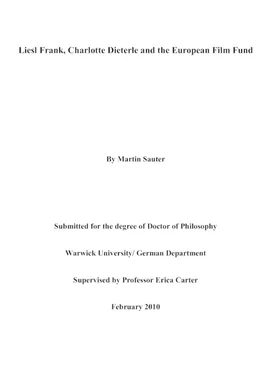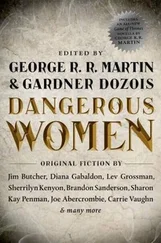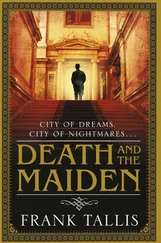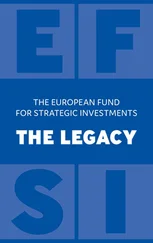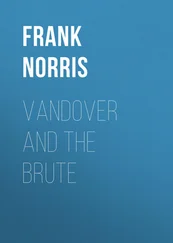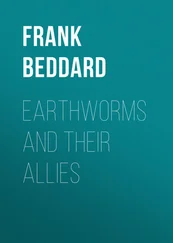In the last chapter of Etwas ... , Asper considers exile film and film genres. Once more echoing Horak, Asper singles out Zuckmayer’s play Der Hauptmann von Köpenick, 19 remade in Hollywood under the title, I Was a Criminal (USA 1945). As we have seen, Horak used I Was a Criminal as an example to emphasize the difficulties which a study of exile film introduces into the definition of a national cinema. The film was made in Hollywood, is based on a German play, is cast nearly in its entirety with émigré actors, and has an émigré director remaking a film he himself had previously made in Weimar Germany. All this prompts Horak to question whether this film should be seen as part of American or German film history. By contrast, Asper’s intriguing and extensive account of the film’s production highlights the difference in approach between Horak and Asper. Asper’s forte lies in the investigation of empirical data rather than any address to academic concerns, such as, for instance, issues in national cinema.
One shortcoming of Etwas ... is its tendency to the anecdotal, another is its failure to mention any aid organisations in which the émigrés were involved other than the short chapter he dedicated to the European Film Fund, though as one of the few consistent accounts on this organisation that are available, Asper‘s book is an important milestone for my own research. Other aid organisations, however, such as, for instance, the Hollywood Anti-Nazi League, the Emergency Rescue Committee or the American Guild for German Cultural Freedom, to name but a few, are almost entirely ignored, highlighting a gap in exile research that is waiting to be filled.
A subsequent work, Filmexilanten im Universal Studio (Berlin: Bertz & Fischer Verlag, 2005), also has its origins in interviews Asper conducted in the 1980s with Henry Koster, Hans J. Salter and Curt Siodmak, who drew Asper’s attention to ‘the vast extent and significance of the work of the exiled German speaking film artists at Universal’ (Asper 2005: 292). Asper also mentions that it was the appointment of Jan-Christopher Horak as founding director of Universal Studio’s Archives and Collections which inspired him to embark on the project, as Horak not only ‘opened the archives to researchers from day one, but also encouraged [Asper] in his undertaking .’(Asper 2005: 292). The synergy between Horak and Asper would eventually result in the article discussed above, ‘Three Smart Guys‘, which Asper terms an ‘interim result of his undertaking’ (Asper 2005: 292). But while ‘Three Smart Guys’ focuses on the influence on Universal of only a small group of émigrés - Henry Koster, Felix Jackson and Joe Pasternak - Filmexilanten examines how Universal was influenced and shaped by the émigrés as a whole. Here, Asper does not solely home in on the twelve years of Nazi power, but looks at the studio’s history from its beginnings until the 1950s. Like Horak, Asper is interested here in the impact of the émigrés on certain aspects of Hollywood or/ and American culture. 20He argues that ‘Universal is particularly suited for such an examination [measuring the émigrés’ influence] as émigré directors, producers, screenwriters, composers, actors and actresses worked there for well-nigh thirty years ...’ (Asper 2005: 11). Although the same applies to, for instance, Warner Bros., 21Universal was distinct in that it was founded and run by a German immigrant. In addition, Universal had close affiliations with the German film industry going back to the Weimar Republic while Paramount’s - as well as MGM’s - affiliations with UFA were of a merely financial nature. 2 2 23Lastly, although most of the major studios took on their fair share of refugees following Hitler’s rise to power, it is safe to say that Universal, along with Paramount and Warner Bros., was more of a haven for refugees than, for instance, Columbia, RKO or even MGM. Hence, Asper concludes that Universal not only gave a large number of émigrés including, for instance, Curt Siodmak, Koster, Pasternak, Jackson, Salter, etc., their first start in the US film-industry, but by doing so it contributed substantially to their successful integration into American society. Indeed, none of them returned to Germany following the end of WWII as other, less integrated, émigrés did. At the same time, the émigrés saved Universal from financial ruin, as evidenced in the Deanna Durbin musicals which were a collaborative effort between producer Joe Pasternak, director Henry Koster and screenwriter Felix Jackson. 24Moreover, the émigrés’ ‘contributed to a transfer of European culture by adapting it for an American audience’ (Asper 2005: 289). This transfer of culture is particularly palpable in Universal’s Deanna Durbin musicals, which have a distinct European flair, as opposed to, for instance, MGM’s Meet Me In St. Louis (MGM, USA 1944), which seems far more American by comparison. In Three Smart Girls (USA 1936), the obvious European elements include the setting (contemporary Switzerland) and the use of classical music, which, in a traditional Hollywood musical, was unusual. Meet Me In St. Louis, on the other hand, is set, as the title suggests, in St. Louis in 1903, just before the World Fair. The song that gave the film its title had already been an American classic at the time of the making of the film. 25The narrative and the characters in Koster’s film -a single parent , a divorcee whose ex-husband is about to marry an adventuress - would also have had no place in Louis B. Mayer’s ‘view of America [which] became America’s view of itself - a place and a people more virtuous, more godly, more resilient than anyplace else’ (Eyman 516 : 2005). 26And while in Meet Me In St. Louis, ‘a paean to hearth and home’ (Eyman 354: 2005), plans to move from the peaceful and quiet city of St. Louis to the iniquitous New York, are abandoned, this is precisely where the family reunion in Koster’s film takes place.
One cannot help but wonder what else Asper might have unearthed, had the Universal archives not been closed following the Vivendi takeover. 27The fact that this invaluable archival material may remain permanently inaccessible to researchers could now mean that the chapters in the history of Universal opened by Asper and Horak may never be closed - nor new ones opened - for sheer lack of accessible material. On another level, Asper’s study gives rise to speculations as to the émigrés’ influence on other studios - Warner Bros., MGM, Columbia, RKO, United Artists, Paramount, 20 thCentury Fox, not to mention the smaller ones like Republic or Monogram. It is certain that émigrés worked at all of these studios, but their impact, input and influence - if there was any - has never been thoroughly investigated. Filmexilanten must be regarded as an inspiration to do just that.
In summary, Asper’s contribution to film history in general and exile research in particular, is unquestionably crucial. Alongside Horak, by whom he was influenced and inspired, Asper has emerged as one of the field’s leading figures. Horak’s approach of course is analytical and diagnostic, while Asper’s own is investigative and biographical. The methodologies of both scholars complement each other however, inasmuch as the detection of data is as fundamental a part of exile research as their critical and contextual analysis. Asper was instrumental in memorialising those émigrés who tended to be ignored by scholars, thus instigating a shift of focus from émigré directors and actors to below-the-line personnel such as cinematographers, editors, production-designers, etc. In Filmexilanten, Asper investigated the émigrés’ impact on Universal, resulting in a groundbreaking study of how the émigrés brought their heritage to bear on one particular film studio. Clearly taking his cue from Horak, who had previously examined the émigrés’ influence on a particular film genre - the anti-Nazi films - Asper’s findings feed into what is now in any case a current shift in film history in general: notably studies of transnational cinema that bring to light the influence of European film artists on American cinema and culture.
Читать дальше
